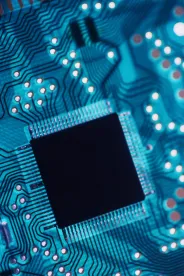By now, everyone knows there is a global auto supply shortage. The impacts of pandemic supply constraints and a global microchip shortage have combined to shrink inventory. June sales saw a significant impact on new-car sales, with June down 14 percent versus 2019.
On the flip side, auto industry companies are seeing soaring profit levels on new cars. Low supply and high demand have led to limited discounting of new vehicles. Ford posted a Q2 profit and raised its outlook for the rest of the year. Forbes reported a Q2 increase of 41% for at least one automotive group for “front-end yield” versus last year. Inventory has conversely fallen to record lows, with just a few weeks inventory for many dealerships, and 25 days nationwide in early July. Toyota benefited from the tumultuous market, relying on a stronger chip supply than other automakers and taking the top spot in Q2 US sales for the first time.
There are mixed reports predicting when the microchip shortage will ease and the supply chains recover. Ford predicted an easing in Q3, and others predict the shortages to ease in the second half of 2021 but remain through 2022.
Now, experts are sounding the alarm on another new squeeze on the horizon- a battery shortage. The German Center for Automotive Research projects a battery shortage for electric cars starting in 2022, as the microchip shortage eases. CAR projects the battery shortage to curtail sales of nearly 19 million cars over the span of 2022 to 2030. This predicted restraint could cause another round of automakers jockeying for supply and stockpiling components. Hopefully automakers are better equipped to manage the supply constraints after the learnings of the pandemic and microchip shortages.




 />i
/>i
